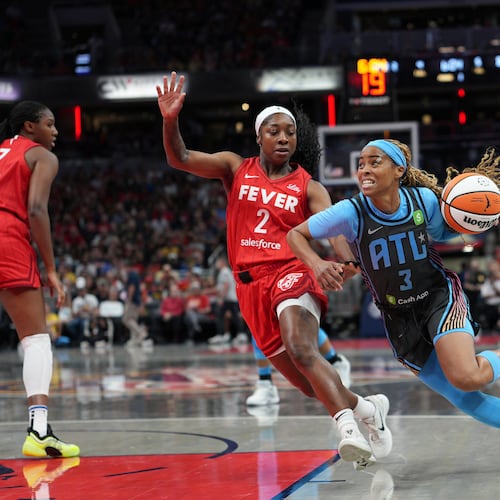If Georgia Tech could play option offenses every week, Yellow Jackets free safety A.J. Gray might not complain.
Against Georgia Southern’s option attack a week ago, Gray often lined up at the linebacker level, four or five yards off the line of scrimmage. He had seven tackles, three for loss. Both were career highs.
“I felt more engaged, and I felt like I could help the team more and make plays for the team,” Gray said.
It was the sort of play that has been anticipated from Gray, who was a standout in spring practice and received high praise from coach Paul Johnson in the summer. Johnson said that Gray could be “one of the all-time great players at Georgia Tech.” In the first six games, however, Gray was relatively quiet, with 23 tackles, half a tackle for loss and no pass breakups or interceptions.
Against Georgia Southern, defensive coordinator Ted Roof played him closer to the line more frequently, swapping him with strong safety Corey Griffin in the deep secondary.
The Jackets were hardly flawless against Georgia Southern. While limiting the Eagles to 167 rushing yards, 119 below their season average to that point, they also permitted Georgia Southern to convert 13 of 20 third downs. But Tech also had nine tackles for loss, the Jackets’ most in the past three seasons. Griffin and Gray led the way with three each.
Georgia Southern’s option offense called for a more aggressive plan with the safeties, Gray said following the game.
“I would say (coaches) just mixed it up,” Gray said “Sometimes I was down, sometimes Corey was down.”
Against Duke this Saturday, it may be that Gray could play a more conservative role as the last line of defense. The Blue Devils’ offense is more balanced than Georgia Southern’s run-heavy scheme, which is what brought Gray forward. Still, it’s conceivable that finding ways for both to get closer to the ball might be part of Tech’s strategy going forward.
“You can always use those guys in those roles,” coach Paul Johnson said.
Griffin is a solid run-support defender. Gray is a sure tackler and reads the game well. For Tech’s defense, which is in need of playmakers, it seems almost a waste to have one or the other lining up 15 yards beyond the line of scrimmage.
But bringing them closer, and in particular using them to blitz, carries risk. Griffin’s biggest play of the Georgia Southern game – a sack on 4th-and-5 on the Eagles’ opening drive of the second half – reflects this. Griffin creeped up from his post 12 yards behind the line of scrimmage to ambush quarterback Favian Upshaw, part of a seven-man pass rush. He left behind him four defensive backs defending four wide receivers one on one with no deep help. Had the blitz somehow managed to be picked up and one of the receivers came open, it could have gone for a touchdown.
“Anytime you bring in secondary people (to blitz), it takes a potential deep zone player out of it,” Roof said. “But at the same time, sometimes you need to overload things.”
While struggling in a lot of areas, Tech’s defense has prevented big plays. The Jackets lead the country with only six plays allowed of 30 yard or more. However, Tech ranks near the bottom of FBS in third-down efficiency (49.5 percent) in part because the pass rush hasn’t been effective enough in causing sacks or incompletions.
Keeping a safety deep prevents big plays but limits blitz possibilities and takes two of the team’s best tacklers out of the equation. Involving Gray or Griffin in a blitz could increase the likelihood of third-down stops or a turnover but increases exposure to big plays. Roof said that “we’re looking at everything,” particularly in regards to the third-down defense.
Gray recognized that what worked against Georgia Southern may not work for the Blue Devils.
“It all depends what the team runs and what kind of offense they run,” Gray said. “We’ll just have to wait and see.”
About the Author
Keep Reading
The Latest
Featured


